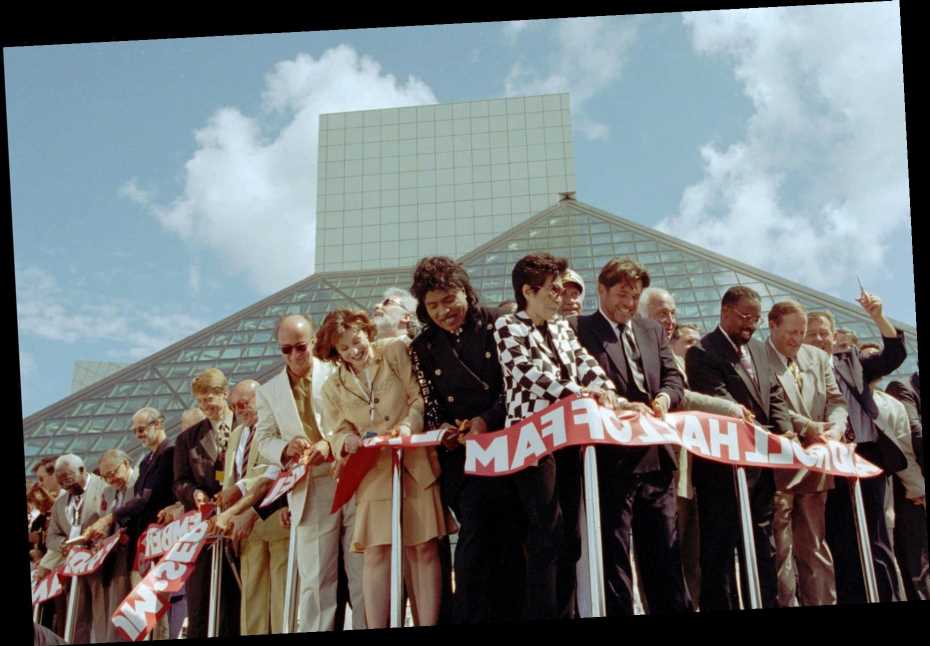On October 2nd, 1995, weeks after the Rock and Roll Hall of Fame opened its doors in Cleveland, Ohio, Rolling Stone founder and then-Hall of Fame chairman Jann Wenner sent a letter to CBS disc jockey Norm N. Nite.
“With all the hoopla past us, I just want to take a moment to go on record and thank you for linking Cleveland to the Rock and Roll Hall of Fame Foundation in the first place,” he wrote. “Without your being there and doing the right thing at the right time — when nobody else saw it — it may never have happened. So my hat is off to you, an unsung hero of the Rock and Roll Hall of Fame.”
Nite has remained the unsung hero of the Rock and Roll Hall of Fame for the past quarter-century, but his new book The House That Rock Built (which he wrote with Plain Dealer journalist Tom Feran) should change that. For the first time, it tells the complete story of how a fading Rust Belt city managed to outmaneuver heavyweight towns like Chicago, Nashville, and Los Angeles to land the Hall of Fame, which has been the top tourist attraction in the state ever since it opened.
“It has become a signature statement,” Nite tells Rolling Stone, “like the Eiffel Tower in Paris, the Space Needle in Seattle or the Statue of Liberty in New York.”
Related
Peter Guralnick on the Musical and Social Revolution of Ray Charles' 'I Got a Woman'
'The Queen's Gambit' and 5 Other Books About Chess Prodigies
Related
Country's 15 Highest Drug Odes
And in the End
Nite begins the book in 1951 when Cleveland disc jockey Alan Freed started playing R&B records on WJW during his midnight show. Inspired by local record store owner Leo Mintz, Freed began calling the music he played “rock & roll.” And on March 21, 1952, he held the Moondog Coronation Ball at the Cleveland Arena. It’s widely seen as the first rock concert.
As the years went by, Cleveland became one of the biggest rock towns in America. It’s where Elvis Presley played his first show north of the Mason-Dixon Line, where David Bowie introduced American audiences to Ziggy Stardust, and a key stop on tours for everyone from Bruce Springsteen & the E Street Band to Pink Floyd, the Jimi Hendrix Experience, and U2.
In the Seventies, Nite established himself as a premier rock & roll historian thanks to his authorship of the book Rock On: The Illustrated Encyclopedia of Rock N’ Roll and his DJ work on WCBS. When the Rock and Roll Hall of Fame put together their first nominating and rules committee in 1983, he was an obvious selection. Their first order of business was picking an inaugural Hall of Fame class, leaving the construction of a physical Hall of Fame building as a mere afterthought. Many members of the committee thought they’d simply buy a New York brownstone where they’d display rock memorabilia and the names of acts inducted into the Hall of Fame.
But Nite had been dreaming of creating a rock and roll museum in Cleveland for years, and he flew to New York in 1985 to sell Atlantic Records co-founder Ahmet Ertegun on the idea. A groundswell of support was already brewing in Cleveland. “Absolutely not,” Eretgun told him. “Mayor Koch has given us a location on 42nd Street, and when we get this thing underway we’re going to put it here in New York.”
“That was the magic moment,” Nite writes in The House That Rock Built. “Had I gotten up and shaken his hand and said thank you and walked out the door, the Rock and Roll Hall of Fame might be on 42nd Street, in a four-story brownstone, a place with some plaques and records on the wall.”
But Nite was unrelenting and he spearheaded an aggressive effort to change minds and build it in Cleveland. Ohio Governor George Voinovich became an unlikely ally in the cause, which took several years and many false starts along with a whole lot of political muscle and government money.
The House That Rock Built traces the saga through every twist and turn, packed with details that have never appeared anywhere else. “So many people want to claim they were responsible for bringing the Hall to Cleveland,” says Nite, “and I knew the real people that were responsible…Also, I wanted to write this book while I was still around. At age 80, it was now or never.”
[Find the Book Here]
Source: Read Full Article


